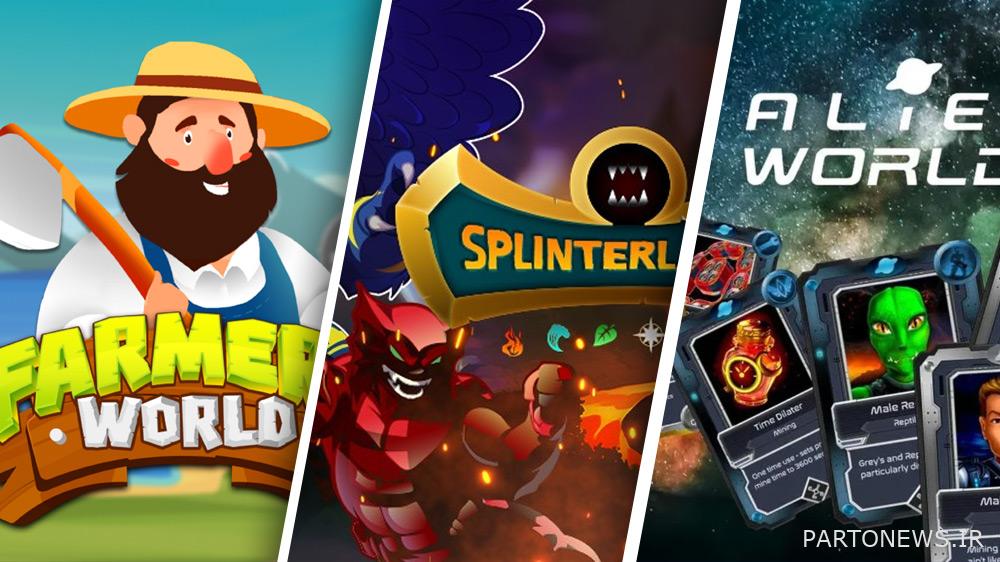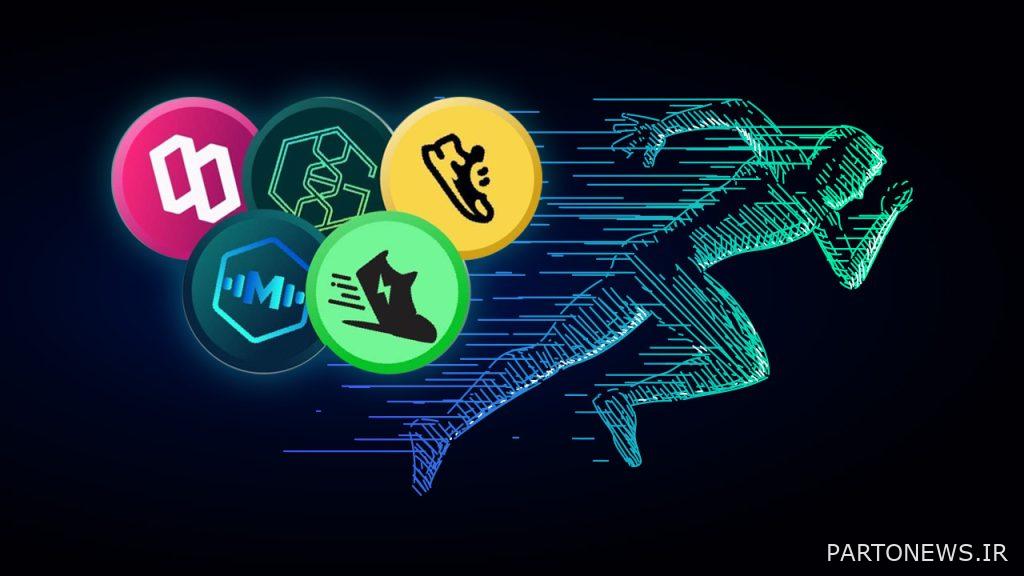Is making money from blockchain games a false hope?

At the beginning of its journey, the blockchain game industry was able to create an enthusiastic atmosphere around games by introducing several popular games; But with the passage of time, this success did not continue and blockchain games were left behind from the competition. Blockchain games have always been mentioned as an attractive tool for the widespread adoption of digital currencies and blockchain technology. The expectation was that the blockchain gaming industry would really flourish; Because many experts and users believed in its capabilities.
Although many games were initially successful, only a handful were able to establish themselves in the highly competitive environment. Of course, it is clear that the weakening of the entire economy of digital currencies did not have an effect on this. Even now that the industry has not stopped moving and developers are trying to continue their activities even in this bear market, it is not clear whether the blockchain gaming industry has a bright future or not.
In this article, take a look at a note We will have from the Coinmarketcap website and with its help we will examine the reasons why blockchain games are not successful and the factors required for the success of this industry. The author of this note is Daniel Philips, who writes about crypto on reputable websites such as CoinMarketCap and DeCrypt. Note that the present article is also from the author’s point of view.
The story of the failure of revenue-generating games (P2E)
Play-to-Earn games became a hot trend in 2021, and hundreds of games with an earning structure were created to encourage users to play and participate in their token economy.
The value proposition or value proposition in these games is simple. Users can be rewarded with digital currency tokens by playing games regularly or winning games. These tokens can be used in the game and can be sold in digital currency exchanges and earn money.
The popular game Axie Infinity was introduced in March 2018 and later became the biggest blockchain game in 2021. At that time, the market value of AXS token reached about 10 billion dollars.

With the promise of very high income, the Oxy Infinity game was able to reach 2.7 million active users in November 2021 and practically started the revenue-generating game industry. After Oxy-Infinity paved the way for profitable games, the industry quickly became a breeding ground for new innovations, and hundreds of profitable games were made during that time. Although most of these games failed to attract the attention of the general public, a few of them, including Splinterlands, Alien Worlds, and Farmers World, achieved great success.

But what happened?
Because the nature of these games was based on making a profit, their players focused much of their attention on the revenue aspect of the games rather than the games themselves. A large number of players were constantly switching between different games to earn more money instead of focusing on the game itself.
Many of these games’ tokens were incredibly overvalued before experiencing a 95% crash. Finally, due to the inapplicability of tokens and poor gameplay, most of the games failed and only a few survived.
New innovations in the blockchain gaming industryY
In addition to the attractiveness of revenue-generating games and the financial benefits of blockchain technology for the gaming industry, some games have been able to create a significant user base for themselves and increase the number of players.
Of course, it cannot be denied that even the most ambitious and successful blockchain games are not comparable to traditional games in terms of the number of daily active players. For example, the Elaine Words game is at the top of the list of most popular blockchain games with about 20,700 daily active wallets. This number of users is noteworthy and important for a blockchain game; But even with these statistics, Elaine Words is not among the top 100 games of the Steam gaming platform in terms of the number of daily players. Top 5 games on Steam platform, more than 200 thousand active players Simultaneous have. This means that 200,000 people are playing an online game at the same time.

In the meantime, the Move-to-Earn segment proved that increasing the number of players and gaining widespread adoption is still possible. In fact, these games can compete with traditional games. STEPN game reached more than 3 million active users at one point. Newer platforms such as PRIMAL have been able to attract a number of influencers and celebrities in the field of bodybuilding and fitness to increase the number of users of their application.
By partnering with celebrities and athletes (with 24 million fans) and adding new and popular fitness gadgets such as Oura, Fitbit and Apple Watch, Primal aims to attract 300 million active users. If it reaches even 1% of this number, i.e. 3 million users, it will become the most popular decentralized application in the world. Of course, it remains to be seen whether the blockchain infrastructure can handle this number of users or not; Because even the most scalable blockchains of the first layer, such as Solana and Olench, have encountered problems and errors during peak traffic times.

The future of the Metaverse
According to many, Metaverse can be the energizer and promoter of the new generation of games. Even now, metaverses host complex and popular games; But Metaverse itself is not without problems. Metaverse has problems that are constantly growing.
To understand this correctly, you can consider the famous Dicentraland application. According to statistics, this application had about 300,000 monthly active users in December 2021; But now we see that only 46 unique wallets interact with this application daily. The total number of Mana token holders is about 290 thousand people. Of this number, only 0.016% of them play daily and only 0.31% play monthly.
If we look at more comprehensive metaverses like sandbox, we get a more accurate picture of this situation. 400 unique wallets operate daily in Sandbox and 1,200 users are active monthly; That means 0.2% and 6% of all token holders, respectively.
However, again, these numbers show how far these metaverses are from non-blockchain Chinese metaverses such as Fortnite and Roblox. These Chinese non-blockchain metaverses each have about 3 million active players per month.
At the same time, the value of Epic Games, the developer of Fortnite game, is estimated to be more than 32 billion dollars, including the 2 billion dollar investment that it had in April 2022. This means that for each daily player (not including other IPs) about 1,000 dollars has been added to the value of this game. If we check Dicentraland with the same logic, we see that 1.63 million dollars have been added to the value of this metaverse for each daily active player.
Newer generation metaverses like XANA with a market value of 5 billion dollars have a more reasonable valuation. This metaverse can experience more sustainable growth with the promise of more access and using popular Japanese IPs to gain a larger user base. Needless to say, this project is still in its infancy and should be left to the test of time.
What do games need to be successful?
Today, most of the blockchain games use the P2E mechanism or the same game to earn money. This means that few of them can attract users with their attractive gameplay.
Unfortunately, this issue has caused the loss of diversity in the space of blockchain games; Because they all have the same fixed model: buy NFT, stake NFT, use NFT to participate in the game, earn rewards or trade with rewards. Only their outer layer or shell is slightly different from each other.
This is why only the first and most ambitious blockchain games have managed to gain a foothold in the industry. Future games should solve the following problems to increase their chances:
- User Experience (UX) Issues: Using web3 applications can be a big problem; Especially since you have to invest some money at the beginning of entering most of these applications. Future games may be able to fix this problem by keeping the blockchain technology behind the scenes so that it does not prevent users from logging in and using more readable names for wallet addresses and the possibility of playing for free.
- Unstable token economy: Revenue-generating games suffer from highly inflated token economy and development costs, which causes token prices to fall and players to disperse. Future games could curb token over-issuance by limiting the players who can receive rewards.
- The right infrastructure: It has been said many times that highly successful blockchain games can destroy or seriously disrupt their underlying blockchain; It means putting a lot of extra burden on it. New games need to run on stronger or more scalable blockchains in order to be responsive to millions of users logging into the game at the same time.
- Entertainment: Although most blockchain games are known as video games, they are usually challenging in gameplay and very few users play them if not for their revenue mechanism. For this reason, a number of games focusing on gameplay are currently in development. Star Atlas and Illuvium are among these games.
Conclusion
As we said, blockchain games appeared very strong and passionate at first; But later, due to some problems, they could not maintain their user base. Maybe we can’t say that making money from blockchain games is definitely a false hope; Because many users have been able to earn money in these games. However, currently these games do not have a strong position and they need factors to be successful in the future. The current model of making money in these games suffered from problems and failed to achieve its initial goals. If these problems are fixed, users can play the game more safely and benefit from a better earning model.

